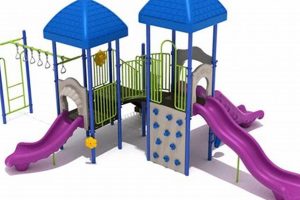Recognition programs in primary education settings typically involve acknowledging student achievements, positive behaviors, and effort. These can range from certificates for academic excellence to awards for demonstrating kindness or perseverance. For example, a student might receive recognition for perfect attendance, significant improvement in a particular subject, or consistent display of good citizenship.
Such programs play a crucial role in fostering a positive learning environment and motivating young learners. They can boost self-esteem, encourage healthy competition, and instill a sense of pride in accomplishment. Historically, acknowledging student achievement has been a cornerstone of effective educational practices, evolving from simple praise to more formalized systems of recognition. These systems contribute to a supportive school culture where effort and positive contributions are valued.
This article will further explore various aspects of recognition in elementary education, including different types of awards, their impact on student motivation, and best practices for implementation. It will also delve into the potential challenges and considerations involved in designing and managing effective recognition programs.
Tips for Effective Student Recognition Programs
Implementing successful recognition initiatives requires careful planning and execution. The following tips offer guidance for developing programs that effectively motivate and encourage elementary school students.
Tip 1: Define Clear Criteria: Establish specific, measurable, achievable, relevant, and time-bound (SMART) criteria for each award. This ensures transparency and fairness.
Tip 2: Recognize a Variety of Achievements: Acknowledge not only academic excellence but also efforts in areas like citizenship, creativity, and perseverance. This promotes a more inclusive and holistic approach to student development.
Tip 3: Personalize Awards: Consider personalized certificates or small tokens that reflect individual student accomplishments, making the recognition more meaningful.
Tip 4: Involve the Community: Invite local businesses or community members to participate in award ceremonies or contribute to prizes. This fosters a sense of community pride and support.
Tip 5: Regular and Timely Recognition: Avoid delaying recognition. Frequent and timely acknowledgements, even for small achievements, can significantly impact student motivation.
Tip 6: Celebrate Achievements Publicly: Organize school assemblies or classroom celebrations to acknowledge student success. Public recognition reinforces positive behaviors and inspires others.
Tip 7: Seek Student Input: Involve students in the process by soliciting their ideas for award categories or recognition methods. This increases student ownership and engagement.
Tip 8: Evaluate and Adapt: Regularly assess the effectiveness of the program and make adjustments based on feedback from students, teachers, and parents. Continuous improvement ensures the program remains relevant and impactful.
By implementing these strategies, educational institutions can cultivate a supportive learning environment where all students feel valued and motivated to reach their full potential.
These tips offer a starting point for developing comprehensive and effective recognition programs. The following section will explore further considerations for ensuring long-term success.
1. Motivation
Motivation serves as a cornerstone of effective recognition programs in primary education. These programs leverage intrinsic and extrinsic motivational factors to encourage positive student behaviors and academic growth. The expectation of receiving an award can act as an extrinsic motivator, prompting students to strive for excellence. Simultaneously, the act of acknowledging effort and achievement can cultivate intrinsic motivation, fostering a genuine love for learning and a sense of pride in accomplishment. For instance, a student initially motivated by the prospect of a “Most Improved Reader” award might develop a genuine interest in reading, continuing to improve even after receiving the award.
The efficacy of such programs depends on understanding individual student needs and tailoring recognition approaches accordingly. While some students thrive on public acknowledgment, others might prefer more discreet forms of recognition. Consider a student who excels in mathematics but feels uncomfortable with public praise. A private commendation from the teacher, acknowledging their hard work and progress, might be more motivating than a public award ceremony. Therefore, diverse recognition methods catering to different learning styles and personality types are essential for maximizing impact. Furthermore, linking awards to specific, achievable goals reinforces the connection between effort and outcome, fostering a growth mindset and encouraging continuous improvement.
Developing successful, motivation-focused recognition programs requires ongoing evaluation and refinement. Challenges such as ensuring fairness, avoiding overemphasis on competition, and maintaining student engagement necessitate careful consideration. Effectively addressing these challenges contributes significantly to a positive learning environment where students feel valued, motivated, and empowered to reach their full potential. Ultimately, the goal is to cultivate a culture of intrinsic motivation where the desire to learn and grow becomes the primary driving force behind student success.
2. Achievement
Achievement, in the context of elementary school award systems, represents the successful attainment of specific learning goals or the demonstration of desired behaviors. Recognizing achievement is central to these systems, serving as a powerful motivator and reinforcing positive learning outcomes. Understanding the multifaceted nature of achievement is crucial for designing effective recognition programs.
- Academic Excellence
This facet encompasses mastery of core subjects, demonstrated through consistent high performance in assessments, projects, and classroom participation. Examples include achieving top scores in mathematics tests, demonstrating strong reading comprehension skills, or excelling in science projects. Acknowledging academic excellence encourages students to strive for intellectual growth and fosters a culture of academic rigor within the classroom.
- Progress and Improvement
Recognizing progress focuses on individual student growth over time, regardless of the starting point. A student who significantly improves their spelling skills or demonstrates consistent effort in mastering a challenging concept deserves acknowledgment. Celebrating progress encourages perseverance, resilience, and a growth mindset, essential qualities for long-term learning success. This approach is particularly important for students who may not consistently achieve top scores but demonstrate significant effort and improvement.
- Skill Development in Specific Areas
This facet highlights achievements in specific domains like artistic expression, musical talent, athletic abilities, or leadership qualities. A student who excels in playing a musical instrument, demonstrates exceptional artistic talent, or exhibits strong leadership skills in group projects deserves recognition. Acknowledging these specialized skills fosters a well-rounded development and encourages students to pursue their passions.
- Citizenship and Positive Behavior
This emphasizes contributions to the classroom and school community through positive behaviors like kindness, respect, responsibility, and cooperation. Examples include consistently demonstrating helpfulness towards classmates, actively participating in school initiatives, or exhibiting exemplary conduct. Recognizing positive behavior reinforces prosocial values and contributes to a positive and supportive learning environment.
By recognizing these diverse facets of achievement, elementary school award systems can create a holistic and inclusive learning environment. Such an approach not only celebrates individual successes but also cultivates a culture of achievement that motivates all students to strive for their personal best, contributing to their overall development and well-being.
3. Positive Behavior
Positive behavior plays a crucial role in elementary school settings, contributing significantly to a supportive and productive learning environment. Integrating positive behavior recognition into class award systems provides a powerful mechanism for reinforcing desirable conduct and shaping school culture. Acknowledging acts of kindness, respect, responsibility, and cooperation encourages students to internalize these values and contributes to their overall social-emotional development.
- Respect and Kindness
Respect and kindness form the foundation of positive interpersonal interactions. Awarding students for demonstrating these behaviors, such as helping a classmate in need, including others in activities, or using kind words, reinforces empathy and compassion. These awards can take various forms, from “Student of the Month” recognitions to smaller gestures like verbal praise or positive notes sent home. Recognizing these actions publicly can inspire other students to emulate such behaviors, fostering a more caring and inclusive classroom environment.
- Responsibility and Self-Discipline
Recognizing responsible behavior encourages students to develop essential self-management skills. Awards for consistent completion of homework, adherence to classroom rules, and taking initiative in tasks like tidying up the classroom reinforce the importance of accountability and self-regulation. These awards can be integrated into daily routines, such as awarding points for completing tasks or providing opportunities for students to take on leadership roles within the classroom. Such recognition helps students develop a sense of ownership and responsibility for their actions.
- Cooperation and Teamwork
Collaboration and teamwork are essential skills for success in school and beyond. Awarding students for effective collaboration in group projects, demonstrating active listening skills, and contributing positively to group discussions reinforces the value of working together. This can be achieved through team-based awards or recognizing individual contributions to group successes. By emphasizing teamwork, classroom award systems can promote positive group dynamics and build a sense of community within the learning environment.
- Perseverance and Resilience
Recognizing perseverance and resilience encourages students to overcome challenges and maintain a positive attitude towards learning. Awarding students for demonstrating effort in tackling difficult tasks, seeking help when needed, and maintaining a positive outlook despite setbacks fosters a growth mindset and promotes emotional intelligence. This can involve acknowledging individual progress and effort, even in the absence of perfect outcomes. Such recognition helps students develop the ability to bounce back from challenges, an essential life skill.
By incorporating these facets of positive behavior into class award systems, educators can create a learning environment that values not only academic achievement but also character development. This approach fosters a holistic educational experience, equipping students with essential social-emotional skills alongside academic knowledge, contributing to their well-being and future success.
4. School Culture
School culture significantly influences the effectiveness of recognition programs in elementary settings. A positive school culture, characterized by inclusivity, respect, and a focus on growth, provides fertile ground for these programs to flourish. Conversely, a culture marked by negativity, unhealthy competition, or a lack of clear values can undermine even the most well-intentioned award systems. Recognition programs, when aligned with positive school culture, become integral to reinforcing desired behaviors and values. For example, in a school that prioritizes collaboration, awards for teamwork and cooperation become not just individual achievements but celebrations of shared values, further strengthening the collaborative ethos. Conversely, in a school where academic competition is overly emphasized, individual awards might inadvertently exacerbate anxieties and undermine collaborative spirit. Therefore, analyzing the existing school culture is crucial before implementing or modifying any recognition program to ensure alignment and maximize positive impact.
The symbiotic relationship between school culture and recognition programs necessitates a thoughtful and integrated approach. Award systems should not exist in isolation but should actively contribute to shaping the desired school culture. For instance, if a school aims to foster a culture of kindness and empathy, incorporating awards for acts of compassion and service becomes essential. Publicly acknowledging such behaviors not only celebrates individual students but also signals to the entire school community that these values are prioritized. Furthermore, involving students in the design and implementation of award programs can foster a sense of ownership and further integrate the programs into the fabric of the school culture. This participatory approach empowers students to actively shape their learning environment, contributing to a more positive and democratic school culture.
A deep understanding of the interplay between school culture and recognition programs is crucial for creating a learning environment where all students feel valued and motivated. Effectively leveraging award systems requires aligning them with the schools core values and ensuring they contribute to a positive and supportive atmosphere. Challenges, such as balancing individual recognition with collaborative spirit or addressing potential inequities in award distribution, require careful consideration. Ultimately, successful integration of recognition programs with school culture fosters a sense of belonging, promotes positive behaviors, and enhances the overall learning experience for all students. This integration contributes to a thriving school environment where individual achievement and collective well-being are mutually reinforcing.
5. Student Well-being
Student well-being forms an integral component of effective classroom award systems in elementary schools. These systems, when implemented thoughtfully, can contribute significantly to a student’s sense of belonging, self-esteem, and overall emotional health. The connection between recognition and well-being operates on several levels. A student who receives an award for academic progress, for instance, experiences a boost in self-confidence, reinforcing their belief in their abilities. Similarly, recognition for acts of kindness or cooperation validates prosocial behaviors and strengthens a student’s sense of social connection within the classroom community. Consider a shy student who receives an award for helpfulness. This recognition can significantly impact their self-perception and encourage further positive social interactions, contributing to their overall well-being. Conversely, poorly designed award systems can negatively impact well-being, potentially fostering unhealthy competition, exclusion, or a focus solely on extrinsic motivation. A system that disproportionately rewards high-achieving students might inadvertently marginalize others, negatively impacting their self-esteem and sense of belonging. Therefore, careful consideration of equity, inclusivity, and the diverse needs of all students is paramount when designing and implementing recognition programs.
Further strengthening the connection between student well-being and recognition programs requires a holistic approach. Focusing solely on academic achievement, for example, might neglect other important aspects of a child’s development. Incorporating awards that recognize effort, perseverance, creativity, and positive character traits contributes to a more comprehensive understanding of student success and fosters a more supportive and inclusive learning environment. For instance, acknowledging a student’s artistic talent or their consistent effort in overcoming a learning challenge contributes to their sense of self-worth and promotes a growth mindset. Moreover, integrating student voice in the design and implementation of award programs ensures that the system reflects student values and priorities, further enhancing their sense of ownership and engagement. When students feel valued and heard, their overall well-being is positively impacted, leading to increased motivation, engagement, and academic success.
Successfully integrating recognition programs with student well-being necessitates ongoing evaluation and refinement. Addressing potential challenges, such as ensuring fairness, promoting intrinsic motivation, and avoiding unintended negative consequences, requires careful attention. Ultimately, effective recognition programs should contribute to a school environment where all students feel supported, valued, and empowered to thrive. This approach recognizes the intrinsic link between student well-being and academic success, fostering a holistic learning experience that nurtures both the cognitive and emotional development of each child. Prioritizing student well-being not only creates a more positive and supportive learning environment but also lays the foundation for long-term academic success and overall life satisfaction.
Frequently Asked Questions
This section addresses common inquiries regarding recognition programs in elementary education, offering insights and clarification on key aspects of their implementation and impact.
Question 1: How can recognition programs be structured to avoid creating unhealthy competition among students?
Focus on individual progress and effort rather than solely on outcomes. Incorporate a variety of award categories to recognize diverse talents and contributions. Emphasize collaboration and teamwork through group projects and peer recognition initiatives.
Question 2: What are some effective ways to recognize students who may not excel academically but demonstrate positive character traits or significant improvement?
Implement awards for citizenship, kindness, perseverance, and other positive behaviors. Recognize individual student progress and effort, regardless of academic standing. Celebrate improvements in specific skills or areas of learning.
Question 3: How can parents be involved in supporting and reinforcing the school’s recognition program?
Communicate regularly with parents about the program’s goals and criteria. Encourage parents to acknowledge and celebrate their children’s achievements at home. Invite parents to participate in award ceremonies or classroom celebrations.
Question 4: What are some alternative forms of recognition besides traditional awards or certificates?
Consider verbal praise, positive notes, student-led presentations, classroom showcases, or small tokens of appreciation. Offer opportunities for students to take on leadership roles or special responsibilities within the classroom.
Question 5: How often should student recognition occur to maintain its effectiveness and avoid diminishing its value?
Balance regular, informal acknowledgements with more formal award ceremonies. Frequent, specific praise and feedback can be highly effective. Larger ceremonies can be held less frequently, such as quarterly or annually.
Question 6: How can a school ensure its recognition program is inclusive and equitable, recognizing the diverse needs and backgrounds of all students?
Establish clear and transparent award criteria. Offer a range of award categories to encompass diverse talents and learning styles. Consider individual student circumstances and cultural backgrounds when designing and implementing the program.
Effectively implementing student recognition programs requires careful consideration of various factors, from fostering a positive school culture to ensuring equity and inclusivity. These FAQs provide a starting point for addressing common questions and concerns, paving the way for developing programs that support student well-being and academic success.
The next section will offer specific examples of successful recognition programs in elementary school settings.
Conclusion
Formalized acknowledgment systems in primary education settings play a multifaceted role in student development, impacting motivation, achievement, behavior, school culture, and overall well-being. Effective implementation requires careful consideration of various factors, including clear criteria, diverse recognition methods, and alignment with the broader school culture. Addressing potential challenges, such as ensuring equity and avoiding unhealthy competition, is crucial for maximizing positive impact.
Cultivating a supportive and inclusive learning environment requires a comprehensive approach to student recognition, encompassing not only academic excellence but also positive character traits, effort, and individual growth. Continuously evaluating and refining these systems is essential for ensuring their relevance and effectiveness in promoting positive student outcomes and fostering a thriving school community. The long-term success of such programs rests on the commitment to recognizing the diverse needs of all learners and harnessing the power of acknowledgment to inspire growth, resilience, and a lifelong love of learning.







